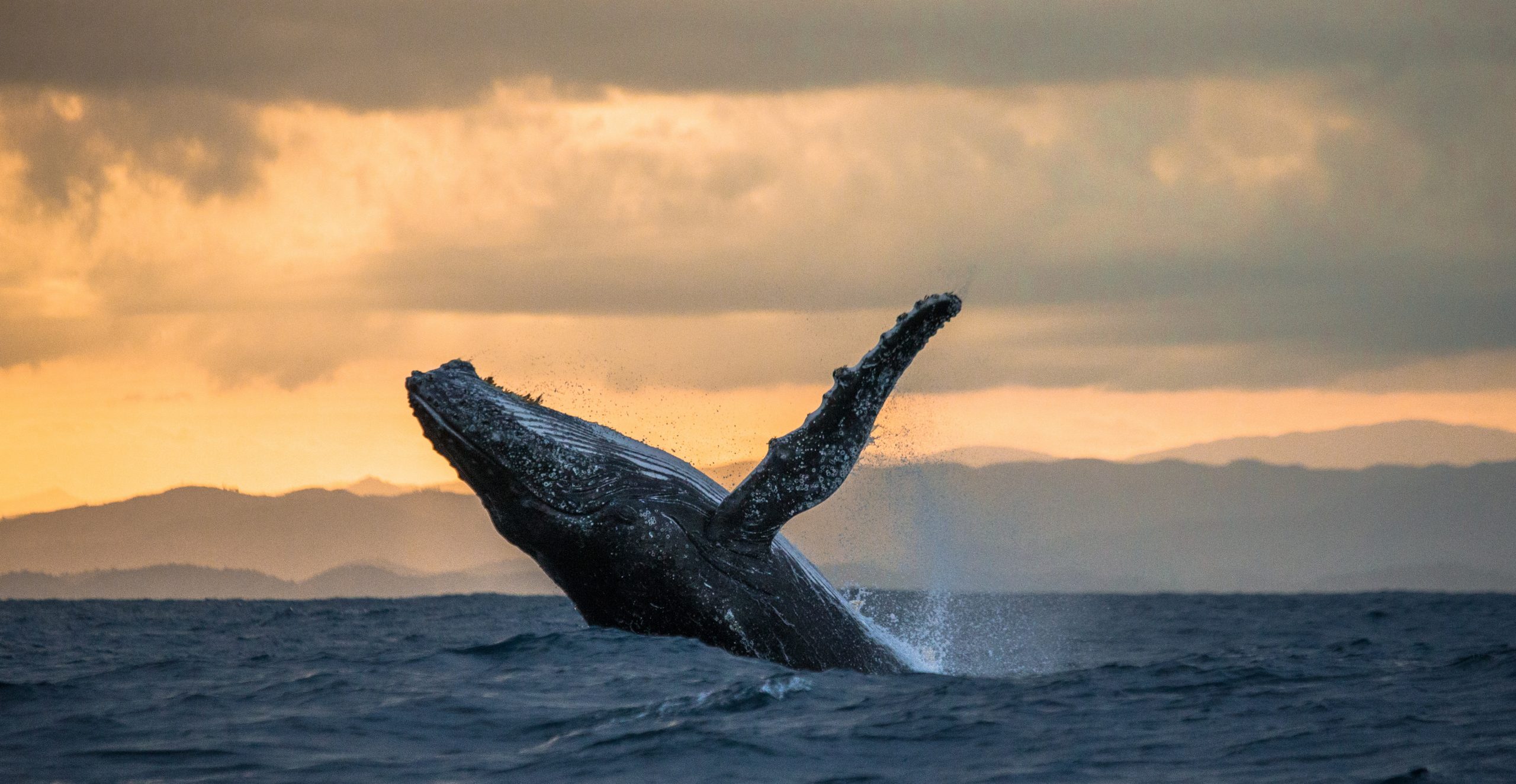
In the tracks of the humpback whales
- 01/14/22
- Activities
Each year during winter (from June to October), the humpback whale migration in our waters is a spectacular experience for us. A breathtaking show you are most welcome to witness while staying at Marguery Villas.
The long migration
The humpback is a species of baleen whale (or mysticete) whose adults usually reach 13 to 14 metres in length and weigh an average of 25 tonnes. They can be found in the world’s oceans and seas, and every winter they perform an amazing show during their migration to the Indian Ocean.
From Antarctica during the Austral summer (December to May) to the Tropic of Capricorn during the Austral winter (June to November), humpback whales travel thousands of kilometres each year to the warmer southern waters to breed. Some mothers even stay until early December, waiting for their only calf to be strong enough to resume their migration. Mauritian winters are therefore an ideal opportunity to meet these impressive creatures.
About whale watching
Operators who organise dolphin spotting trips also offer humpback whale watching. It is difficult to know in advance if the whales will be seen, so the skippers communicate with one another so that information can be passed on as soon as a herd or individual is spotted, notably thanks to the sprays of water that reveal their movement.
Although it is sometimes necessary to sail a few nautical miles away from the coast, the observation can be made within fifteen minutes of the beaches by boat.
As with any whale watching trip, a briefing is held by the crew to inform you of the approach, the rules and the potential dangers of being near the whales. Within the 300-metre zone, boats should reduce speed to make a slow approach, avoiding large speed changes and always keep a distance of about 50 metres parallel to the animal without coming from behind or ever crossing its path.
A magical experience
Most humpback whales arriving in Mauritian waters settle in an area of several square kilometres in the south, near the Coin de Mire and the Round and Flat Islands in the north, as well as in the west, between Albion and Le Morne. As they choose shallow continental waters (between 25 and 60 metres) to give birth, they can sometimes be observed very close to the Mauritian coast.
Also, during the breeding season, the males compete with each other in vocalizations to seduce the females. The songs can be heard by the human ear several kilometres away. But the most spectacular part is the love parade in which the males engage.
Jumping out of the water in impressive choreographies given their size and weight, the humpback whales execute rare beauty leaps, with great splashes of foam. You have to carefully watch the surface to guess where the whale will emerge. But it is worth the wait!
How to organise your humpback whale watching trip
Tell your Marguery Villas concierge about your plans, so that he can check with the operators for information on the whales’ whereabouts. Be flexible on the day, as humpback whales have their own agenda. If you’re lucky, you’ll be able to see both dolphins and whales.
As with any winter outing, remember to bring warm clothing. Unlike the dolphins, you won’t be able to get into the water, but you won’t regret it, as the show is mostly on the surface. Listen carefully, open your eyes and capture this wonderful memory of your holiday in Mauritius!
On a family holiday in Mauritius this winter? Delight the children with this moving and majestic show and educate them on the absolute necessity to preserve the last giants of the sea.